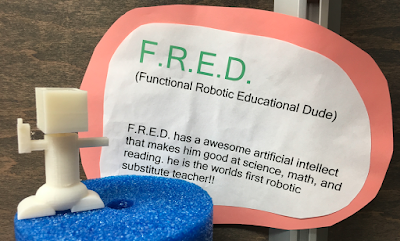 |
| Image Source: Social Times |
Our oldest daughter just turned sixteen. She has been asking for a Snapchat account for a few years now. Until now we have said no.
As I poll students at the presentations I give around the state, about two years ago I started seeing Snapchat surpass all other social media tools used by tweens and teens. Despite its popularity as well as our daughter insisting that we were unfair (and that she was the only one without an account), we held off. We certainly had a lot of discussions about it and my wife and I spent a lot of time reflecting on our decision and beliefs.
As I poll students at the presentations I give around the state, about two years ago I started seeing Snapchat surpass all other social media tools used by tweens and teens. Despite its popularity as well as our daughter insisting that we were unfair (and that she was the only one without an account), we held off. We certainly had a lot of discussions about it and my wife and I spent a lot of time reflecting on our decision and beliefs.
We haven't allowed Snapchat for two main reasons. One, we are concerned about the inappropriate content and sexting that an app like Snapchat could potentially encourage. We trust our daughter and she is a great kid, but research has shown that not everyone uses Snapchat appropriately. It is quite likely that she might receive inappropriate content even if she doesn't want it. An app like Snapchat that leads users to believe that technology is temporary is often in the news for negative reasons. Second, we want to help our children maintain a healthy balance in the amount of entertainment/social screen time in their lives, and we know that having yet another social media tool will likely take up more time, not just replace time already spent on Instagram or texting with friends.
I know that by waiting we have been more conservative than some parents. In fact, I know of some elementary students with smartphones that use Snapchat. When we recently randomly sampled our grade 5-12 students' parents and 528 of them completed the survey. One of our questions was "At what grade level do you think it is appropriate for students to begin using social media tools like Instagram, Snapchat, and Twitter?" Here are the results:
So according to the data, we are in the minority of parents who have held out. We've been OK with that. A few years ago we had a parent/community book read on Dr. David Walsh's book, No: Why Kids--of All Ages--Need to Hear It and Ways Parents Can Say It. We found the book and Dr. Walsh's advice helpful, and believe it is important to not always give in. Our kids will be stronger and more resilient people because of it. As a parent, it can be tough to hold your ground. As stated on the Amazon book description, "Although saying No to your child is obviously important, many parents still have a hard time following through—even when they know they should—especially when other parents and the culture around them are being permissive."
As I've written in the past, I believe we should gradually and slowly expand the technology tools and freedom our kids use after practice and success (see How much should parents snoop?) For example, we waited until she was 12 years old to get her a phone (see Best Age to get a Smartphone), use Curbi so her phone is filtered (more on Curbi here), and until she was 14 and in ninth grade to allow Instagram (see Raising JOMO kids in a FOMO world). We also keep tech out of the bedroom at night. We continue to have frequent conversations about using technology and social media appropriately.
I know that by waiting we have been more conservative than some parents. In fact, I know of some elementary students with smartphones that use Snapchat. When we recently randomly sampled our grade 5-12 students' parents and 528 of them completed the survey. One of our questions was "At what grade level do you think it is appropriate for students to begin using social media tools like Instagram, Snapchat, and Twitter?" Here are the results:
5.6% think upper elementary is appropriate
53.1% think middle school is appropriate
34.3% think high school is appropriate
7% say it's not appropriate
53.1% think middle school is appropriate
34.3% think high school is appropriate
7% say it's not appropriate
 |
| Image Source |
As I've written in the past, I believe we should gradually and slowly expand the technology tools and freedom our kids use after practice and success (see How much should parents snoop?) For example, we waited until she was 12 years old to get her a phone (see Best Age to get a Smartphone), use Curbi so her phone is filtered (more on Curbi here), and until she was 14 and in ninth grade to allow Instagram (see Raising JOMO kids in a FOMO world). We also keep tech out of the bedroom at night. We continue to have frequent conversations about using technology and social media appropriately.
As she has proven she is responsible we have allowed more tools and given her more freedoms. Now she is 16 and has a drivers' license. As difficult as it is to let go, we plan to continue to guide her on the path to adulthood. It's hard to believe she only has two years left with us before she is on her own. We hope that the guidance we have provided will give her a solid foundation for making wise decisions. Who knows, maybe some day she will even thank us for it!
Related posts:














